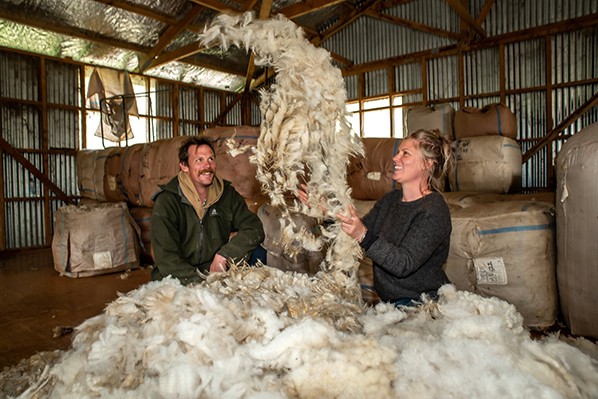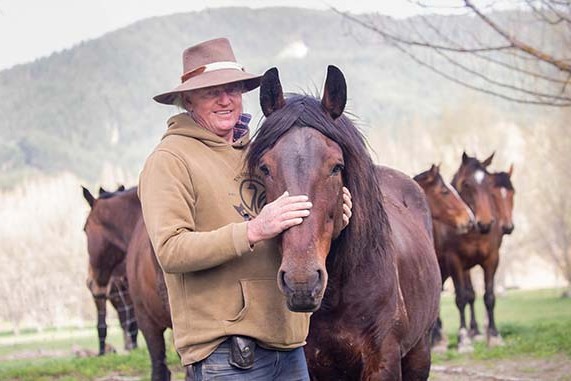Dear Auntie Thistledown
Yes we are all going to die, there is no amount of environmentalism that will render any of our darling readers immortal.

Q – Can you kindly explain the RCP, GWP, IPCC, and all the other word-jumbles that mean my livestock are eco-terrorists? Are we all going to die? I can’t even keep rhubarb alive and they want me to start farming beans or something.
Sincerely,
Slightly Panicked
Dear SP,
Yes we are all going to die, there is no amount of environmentalism that will render any of our darling readers immortal. If it helps, everyone says that Buddha says that life is suffering. If that doesn’t bring you inner peace, then you can tell it to your rhubarb plants. Or pop a plant protector round them. Everyone says that rhubarb leaves are toxic, but that has yet to stop the birds, rabbits and possums.
Anywho, I can’t help thinking that saving the planet would be a little easier if they didn’t use so many damn acronyms.
Let’s see. The IPCC is the Intergovernmental Panel on Climate Change, which is a group that reviews climate change research for the United Nations (i.e. the UN). Think of this as like a potluck lunch, but instead of bringing lamingtons, governments bring their scientists. The idea here is that governments can pool resources to keep abreast of the latest science developments. The reality is that scientists get together every six or so years to inform politicians, with increasing certainty, that they need to do something about the cars, cement, and coal etc.
This is kind of related to the COP (conference of the parties) which is when the politicians get together and make promises to do something about the cars, cement, and coal etc.
The RCPs or representative concentration pathways are the forecasts for how much greenhouse gases will accumulate in the atmosphere, depending on how much the politicians do about the cars, cement, and coal etc. They range from working very hard to keeping temperatures within 1.5 degrees of warming (RCP 1.9), through to “we’ve found more oil, tell Noah to ready the ark” (RCP 8.5).
The GWPs or global warming potentials are a form of accounting. They are just about as tedious and loop-holey as every other form of accounting. Carbon dioxide is the main greenhouse gas, it is released into the atmosphere everytime we burn something or breathe out. But there are eight or so other gases that humans are releasing that can also cause issues. The GWP is essentially a form of currency exchange to “convert” the measurements of other greenhouse gases into “carbon dioxide equivalents”.
Let’s look at the greenhouse gas, methane.This is the bugbear of cattle, sheep and rice farmers, but methane is also released by much less wholesome human activities, such as landfills and fossil fuel production. Methane is less abundant than carbon dioxide (i.e. measured in parts per billion rather than parts per million) and it hangs around in the atmosphere for a much shorter duration (i.e. a half life of about 10 years vs 120 years), but while the methane is there it is about 28 times better at holding in heat than carbon dioxide. Here’s where the bickering starts. If you had equal amounts of carbon dioxide and methane, you couldn’t just say that methane is “worth” 28 times more than carbon dioxide, because after a decade half your methane has disappeared.
So you would have to say methane is worth such-and-such amount of carbon dioxide over such-and-such period of time. If you choose 100 years (GWP 100) then methane ends up being worth about 20-40 times the carbon dioxide, if you choose 500 years then it ends up being 5-6 times. Then there is GWP* which is a method of adding more value to methane when it is first released and then less in it’s later years. The idea being that stable amounts of methane emissions over long timeframes are less harmful than large pusles of methane emissions released today. And if you didn’t roll your eyes at all that and growl “who cares, just do something about the cars, cement and coal” then you, my dear, have no future in politics.
Aunty Thistledown.
- Cali Thistledown lives on a farm where all the gates are tied together with baling twine and broken dreams. While she rarely knows what day it is, she has a rolodex of experts to call on to get the info you need. She’s Kiwi agriculture’s agony aunt. Contact our editor if you have a question for her terry.brosnahan@nzfarmlife.co.nz




